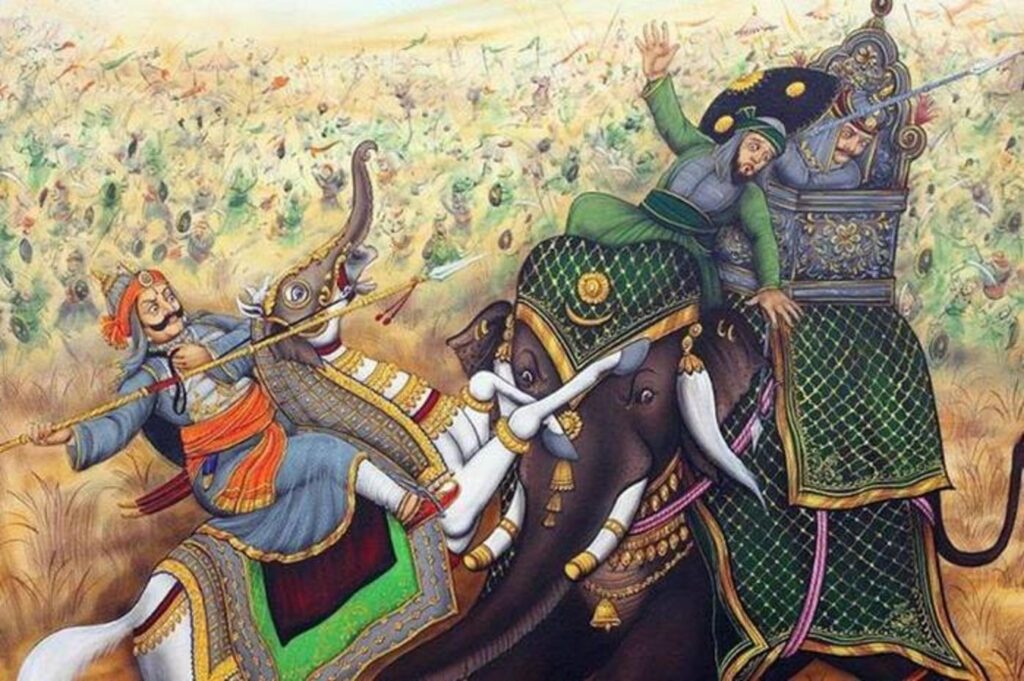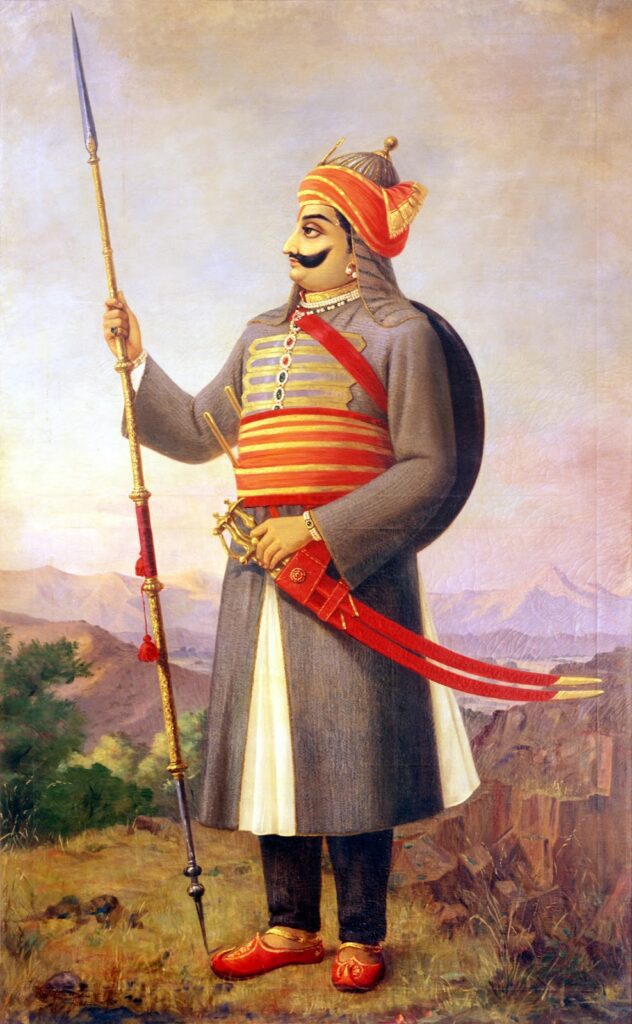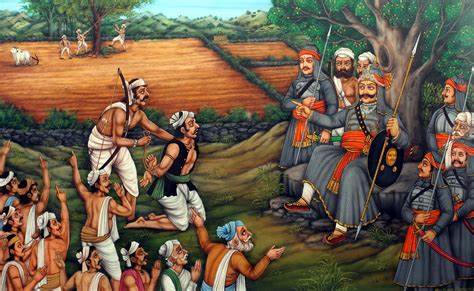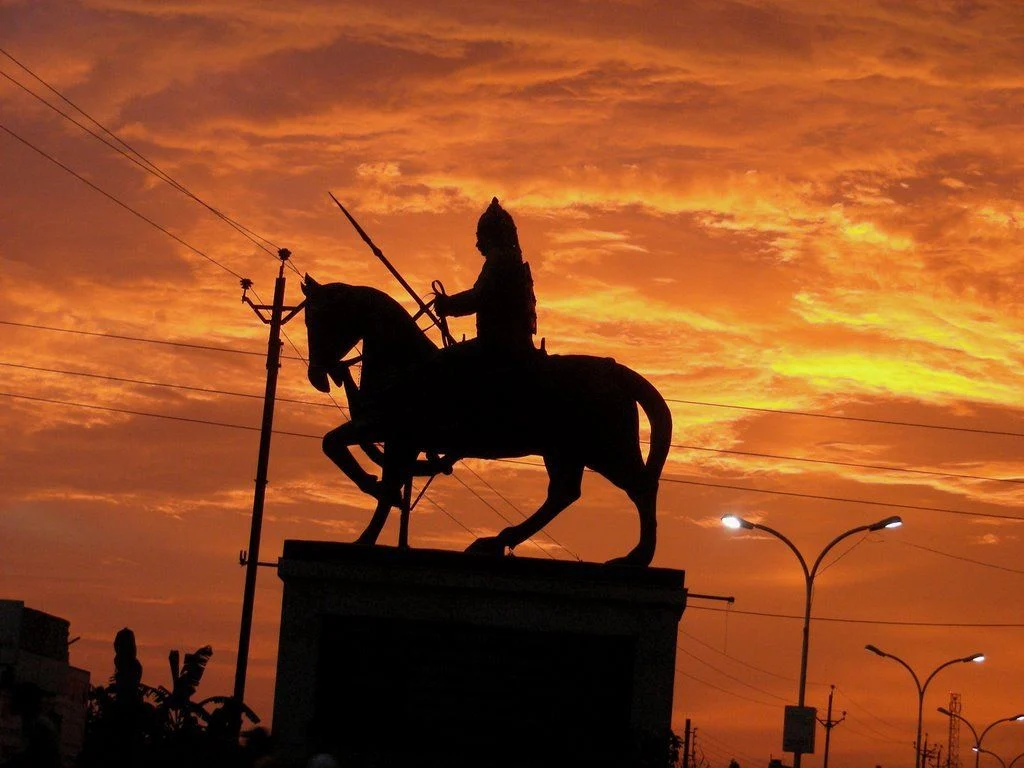In Indian history, Maharana Pratap is a legendary figure who is remembered for his bravery, resistance to the Mughal Empire, and unwavering struggle for the independence and honor of his kingdom, Mewar. Maharana Pratap, who was born in 1540, succeeded to the throne of Mewar in 1572. He took over a kingdom that was surrounded by powerful adversaries. Maharana Pratap waged a guerrilla war against the Mughal Empire, inspiring other Rajput states to join his cause, despite the overwhelming odds against him. As a symbol of Rajput self-respect and pride, his legacy has inspired subsequent generations to fight for their rights and independence in Indian history. We will examine Maharana Pratap’s early life, the Battle of Haldighati, his resistance to the Mughals, and his lasting influence on Indian history in this blog.
Early Life and Accession to the Throne
In 1540, Maharana Pratap was born in a part of India that is now known as Rajasthan and belonged to the royal family of Mewar. He was educated and trained in martial arts and military tactics from a young age and was the son of Mewar’s ruler, Udai Singh II. Maharana Pratap succeeded to the throne of Mewar after his father’s death in 1572, inheriting a kingdom surrounded by formidable foes, including the Mughal Empire.

Mewar was seen as a strategic target due to its rich cultural and economic heritage at a time when the Mughal Empire was rapidly expanding across India. Maharana Pratap refused the Mughals’ demands to submit to their rule and pay tribute, citing his belief in Mewar’s independence and honor. This position would come to define his reign and establish him as one of India’s most revered and admired rulers in history.
The Battle of Haldighati
Maharana Pratap’s life was significantly impacted by the Battle of Haldighati, which marked a turning point in his resistance to the Mughal Empire. The Maharana Pratap forces fought the Mughal army led by Man Singh, the general of Emperor Akbar, in 1576 near the village of Haldighati in Rajasthan.

The Mughals were determined to subdue the Rajput resistance and maintain their hold on Mewar and the surrounding area during the conflict. Even though Maharana Pratap’s forces were vastly outnumbered, they fought fiercely, and the battle ended in a deadlock. Even though it was technically a draw, the Mughals were able to keep control of the area and force Maharana Pratap to leave.
Maharana Pratap’s bravery and determination in the face of overwhelming odds earned him widespread respect and admiration, even though he did not win the battle decisively. Future generations of Rajputs would be encouraged to resist external aggression by the Battle of Haldighati, which would become a symbol of Rajput bravery and resistance. In addition, the battle established Maharana Pratap’s status as a legendary figure and a symbol of Indian resistance to foreign rule.
Background and reasons for the battle
The forces of Maharana Pratap, the ruler of Mewar, and the Mughal army led by Man Singh, the general of Emperor Akbar, fought at the Battle of Haldighati. The Mughal Empire’s expansionist policies, which sought to establish control over all of India and subdue any resistance to their rule, are the root cause of the conflict.
The Mughals saw Mewar as a key target because of its rich cultural and economic heritage. In the years leading up to the battle, the Mughals repeatedly demanded that Maharana Pratap submit to their rule and pay tribute. However, Maharana Pratap cited his belief in Mewar’s independence and honor as the reason he refused to submit to the Mughals.
The Mughals were determined to subdue the Rajput resistance and maintain their hold on Mewar and the surrounding area during the conflict. The Mughal expansionist policies and Maharana Pratap’s refusal to submit to their rule culminated in the battle’s causes. The outcome had a long-lasting impact on India’s history and the Rajput resistance to foreign rule. It was a battle between oppressive forces and resistance forces.
Description of the battle
The Mughal army led by Man Singh, the general of Emperor Akbar, and the forces of Maharana Pratap, the ruler of Mewar, engaged in a bloody and bloody battle known as the Battle of Haldighati. On June 18, 1576, the battle took place near the Rajasthani village of Haldighati.
The Mughal army outnumbered Maharana Pratap’s troops by a wide margin in the battle for control of Mewar and the surrounding area. Maharana Pratap and his men fought valiantly despite the odds, using traditional weapons like swords and shields and engaging in hand-to-hand combat.

The Mughals were unable to secure a decisive victory in the battle, which was technically a draw despite the bravery and determination of Maharana Pratap and his troops. But the Mughals were able to keep control of the area and force Maharana Pratap to leave.
Maharana Pratap’s life was significantly impacted by the Battle of Haldighati, which marked a turning point in his resistance to the Mughal Empire. It would become a symbol of the Rajputs’ resistance and independence, a testament to their bravery and determination. As a reminder of the sacrifices made by those who fought for their rights and freedom, the battle also had a lasting impact on Indian history.
Aftermath and impact of the battle on Mewar and Rajputana
Mewar and Rajputana were profoundly affected by the political and cultural repercussions of the Battle of Haldighati.
Politically, the battle was a turning point in the resistance to the Mughal Empire. Maharana Pratap’s bravery and determination inspired subsequent Rajput generations to resist external aggression. Maharana Pratap continued to resist Mughal rule despite being forced to retreat, and his defiance of the empire would become a symbol of Rajput independence and resistance.
The battle had a lasting cultural impact on the people of Mewar and Rajputana. The bravery and determination of Maharana Pratap gave the Rajputs a new sense of pride and identity. In addition, the battle established him as a legendary figure and a symbol of resistance to foreign rule in Indian history. He would also become an important part of Rajput folklore and tradition.
The Rajputs’ bravery and determination, as well as their unwavering dedication to their rights and freedom, can be seen in the effects that the Battle of Haldighati had on Mewar and Rajputana. It is a symbol of hope for future generations and a reminder of the sacrifices made by those who fought for their beliefs.
Resistance against the Mughal Empire
Maharana Pratap’s guerrilla warfare tactics
Maharana Pratap continued his guerrilla warfare resistance against the Mughal Empire after the Battle of Haldighati. Hit-and-run attacks, ambushes, raids, and other forms of irregular warfare were used in these strategies to weaken the Mughal forces and break their hold on the area.
The guerrilla warfare strategies of Maharana Pratap were designed to take advantage of the Rajputs’ local knowledge and terrain, and they were characterized by their speed, mobility, and surprise. He put a lot of faith in his troops’ ability to blend into the hills and forests around them, making it hard for the Mughals to find them and fight with them.

The fact that, despite the Mughals’ attempts to subdue him, Maharana Pratap remained independent and in control of Mewar for many years demonstrated the effectiveness of his guerrilla warfare strategies. His bravery and determination in his resistance to the Mughals are reflected in his guerrilla warfare strategies, which have come to symbolize the Rajputs’ resistance to external aggression.
The use of guerrilla warfare by Maharana Pratap was a significant advance in the struggle against foreign rule, and subsequent resistance movements have cited his example as a source of inspiration for their own struggles. Military strategists and academics continue to examine his strategies as an example of efficient irregular warfare.
Support from other Rajput states
Maharana Pratap received support from a number of other Rajput states during his struggle against the Mughal Empire. Marwar, Bikaner, and Jaisalmer were three important states that backed him in his fight against the Mughals.
These states were motivated by their shared cultural and historical ties and saw Maharana Pratap as a symbol of Rajput resistance and independence. They also wanted to protect their own independence and autonomy from Mughal expansion by supporting Maharana Pratap.
Maharana Pratap was able to continue his resistance against the Mughals thanks to the support of other Rajput states, who provided him with the resources, manpower, and political backing he required. It demonstrated the Rajputs’ unwavering dedication to their freedom and rights, and it was evidence of the strong bonds of unity among them.
Maharana Pratap’s resistance to the Mughals was made possible in large part by the support of other Rajput states. This support would later serve as an inspiration to subsequent generations of Rajputs who wanted to protect their independence from outside forces. It is still celebrated as a sign of Rajput unity and solidarity and a significant part of Rajput culture and history.
The Mewar-Mughal treaty and its significance
After several years of conflict, the Mewar kingdom and the Mughal Empire reached a political agreement known as the Mewar-Mughal Treaty. The treaty had significant repercussions for the region and its people and marked a significant turning point in the relationship between the Mewar kingdom and the Mughals.
The treaty effectively brought an end to fighting between the Mewar kingdom and the Mughals and formalized their peace. The treaty acknowledged the Mewar kingdom’s independence and granted it autonomy in exchange for a small tribute to the Mughal emperor.

The Mewar-Mughal Treaty had significant repercussions for the Mewar kingdom because it effectively recognized its independence and permitted it to continue governing itself without the Mughals’ interference. For Maharana Pratap and the people of Mewar, who had been resisting Mughal rule for a number of years, it was a significant victory.
Because it marked a departure from the Mughal Empire’s previous aggressive policies toward the Rajput states, the treaty also had significant repercussions for the Mughal Empire. Mewar’s recognition of independence by the Mughals, who had previously attempted to conquer and subjugate the Rajput states, demonstrated the strength of the resistance to their rule.
The Mewar-Mughal Treaty is still a significant part of Indian history because it established a precedent for the Mughals’ recognition of Rajput independence and marked a significant turning point in the relationship between the Mewar kingdom and the Mughals. It is evidence of the Rajputs’ bravery and tenacity that they were able to defend their independence from external aggression and negotiate a long-term peace with the Mughal Empire.
Legacy and impact of Maharana Pratap
One of Indian history’s most significant figures, Maharana Pratap’s legacy continues to have a significant impact on the region and its people.
In India, Maharana Pratap is revered as a hero because he served as a symbol of Rajput resistance to the Mughal Empire. His name is associated with bravery, determination, and independence. Millions of Indians look to him as an example of what can be accomplished with courage and determination, and his story serves as an inspiration to them.

The legacy of Maharana Pratap has also had a long-lasting effect on the people of the area. His resistance to the Mughals contributed to the Mewar kingdom’s independence and set an example for other Rajput states, who looked to him for advice and motivation in their own battles against outside aggression.
Because he was one of the first to use guerrilla warfare strategies against a larger and better-equipped adversary, Maharana Pratap’s legacy is also significant in military history. Military strategists and academics have studied his strategies, which are still regarded as an example of efficient irregular warfare.
In conclusion, India and its people are still profoundly influenced by Maharana Pratap’s legacy. His story has inspired millions, and he is still regarded as one of the nation’s most significant figures because of his bravery, perseverance, and independence.
Conclusion
Maharana Pratap was a mythical figure in Indian history who was admired for his bravery, resolve, and independence. As the ruler of the Mewar kingdom, he opposed the Mughal Empire’s efforts to subjugate Rajput states and conquer them.
Maharana Pratap’s resistance to the Mughals contributed to the Mewar kingdom’s independence and established a precedent for other Rajput states. His guerrilla warfare strategies were innovative and effective. After years of conflict, the Mewar kingdom’s independence was acknowledged and a long-lasting peace was established by the Mewar-Mughal Treaty, which was signed.
India and its people continue to be profoundly influenced by Maharana Pratap’s legacy. His story continues to inspire millions of Indians, and he is hailed as a hero and a symbol of Rajput resistance to external aggression.
Maharana Pratap was a legendary figure who had a significant influence on the history of India and its people. His legacy continues to have an impact on the region and its people that will last a lifetime.
FAQs
Who was Maharana Pratap?
In the 16th century, Maharana Pratap was the ruler of the Mewar kingdom. He is remembered for his resistance to the Mughal Empire.
What motivated Maharana Pratap to oppose the Mughals?
In order to safeguard the Rajput states’ sovereignty and the independence of the Mewar kingdom, Maharana Pratap opposed the Mughals.
How did Maharana Pratap fight back against the Mughals?
To successfully resist the Mughals, Maharana Pratap employed guerrilla warfare strategies by utilizing his superior terrain knowledge and capacity to garner support from other Rajput states.
What was the result of Maharana Pratap’s resistance?
The Mewar-Mughal Treaty was signed by Maharana Pratap’s resistance, which acknowledged the Mewar kingdom’s independence.
What is Maharana Pratap remembered for?
Maharana Pratap is celebrated as a symbol of Rajput resistance to external aggression and is remembered for his bravery, determination, and independence.
What is Maharana Pratap’s legacy?
The innovative military strategies that Maharana Pratap used are still studied by military strategists, and his inspiring story continues to inspire millions of Indians.
In India, why is Maharana Pratap regarded as a hero?
In India, Maharana Pratap is regarded as a hero for his bravery, determination, independence, and resistance against the Mughals to preserve Rajput states’ sovereignty.







